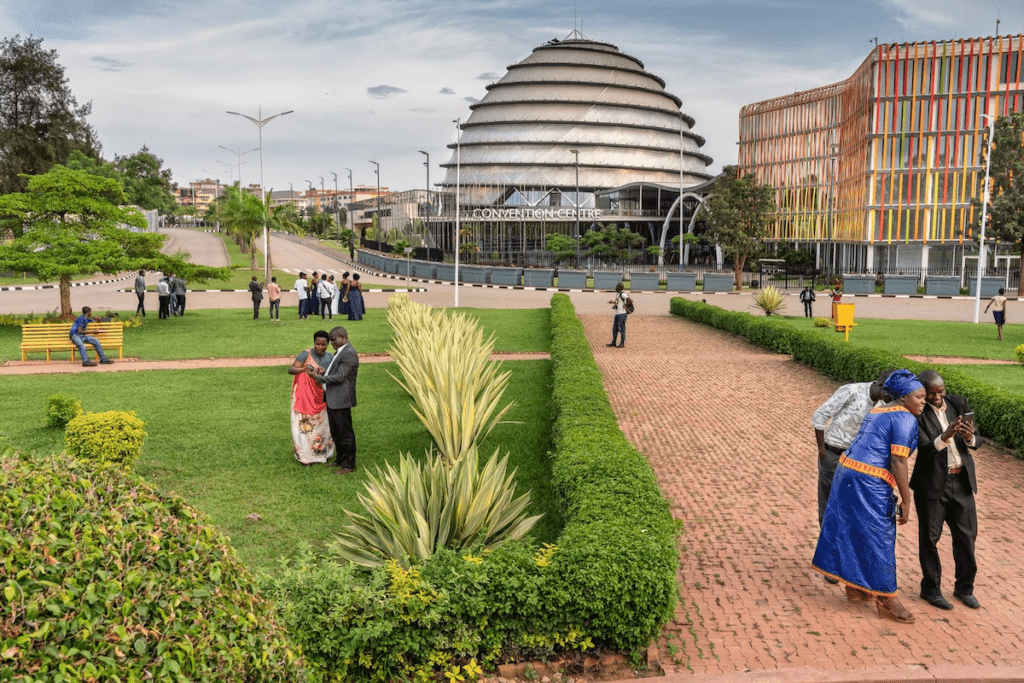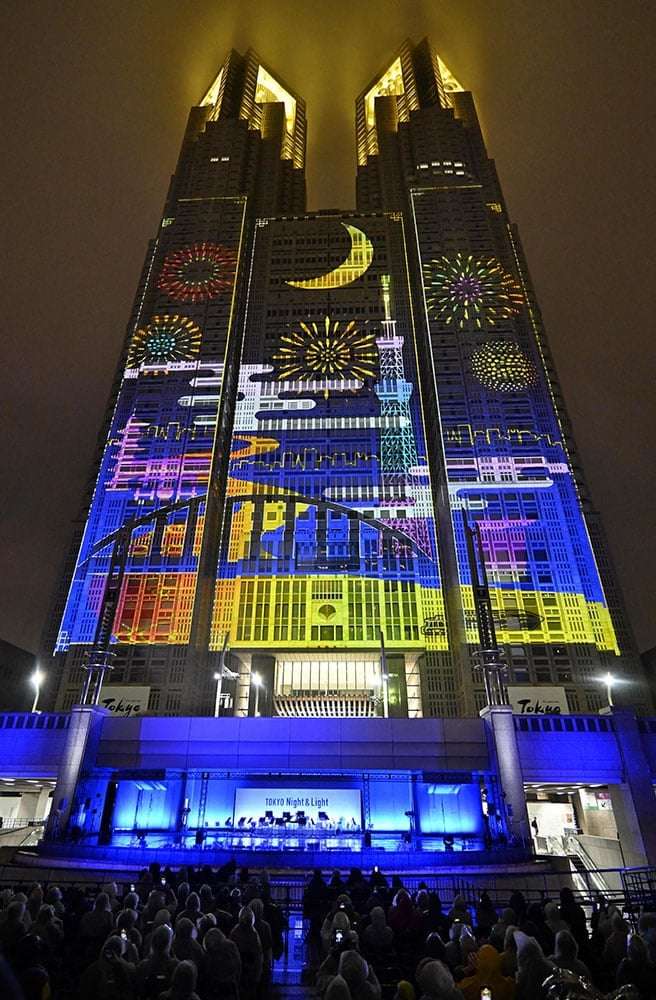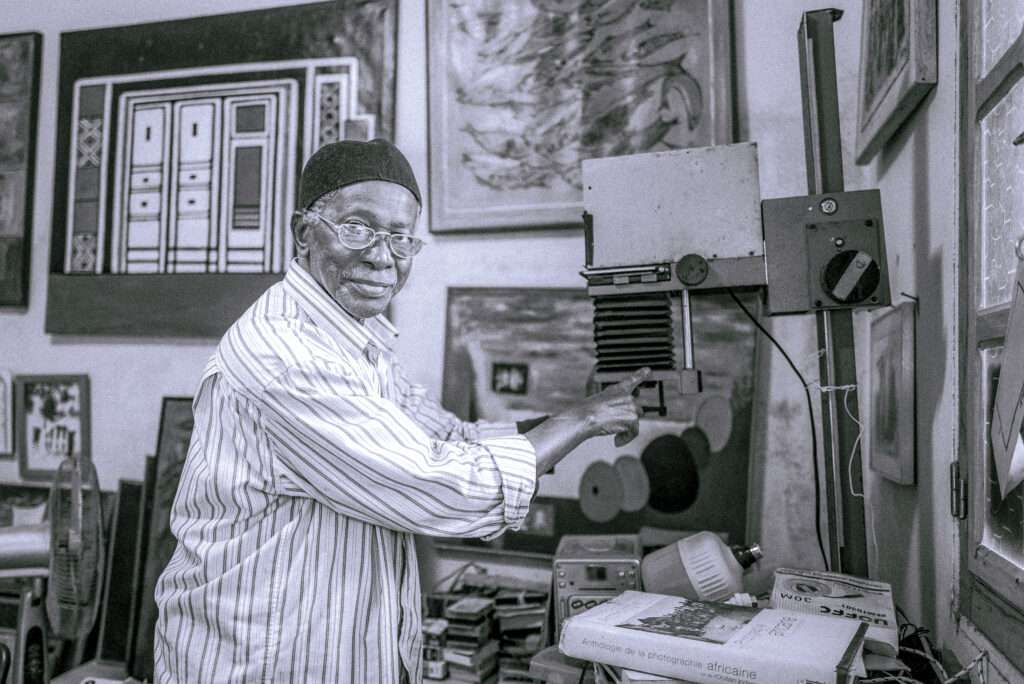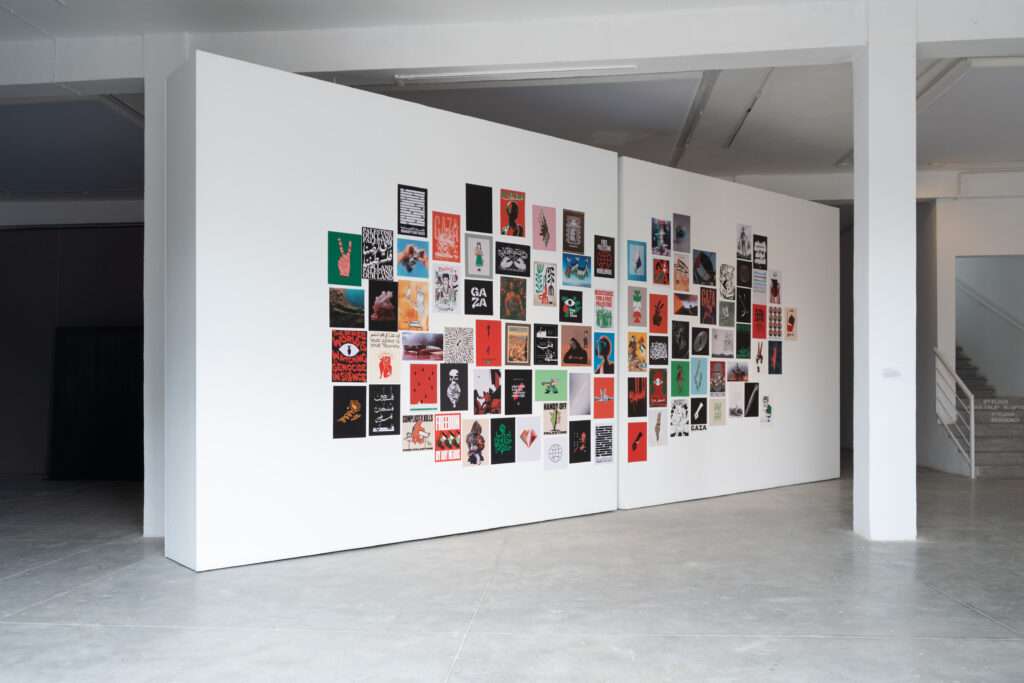When you fly over Rwanda for the first time, from the blue of the sky, you are struck by the green hills and forests that dot the country rightly nicknamed “Little Switzerland”. Kigali, perched at an altitude of 1,500 metres, means “something big and spreading” in the local dialect. The Rwandan capital, made up of several worlds, forms a patchwork on the horizon, with, on the one hand, the new districts with their ultra-modern buildings and famous international signs, signs of an economic dynamism propelled by the current government, with in particular the Congress Centre, the Kigali International Financial Centre and the future Innovation City, and on the other hand, the poor and traditional districts, but just as carefully planned.
President Paul Kagame, who has ruled this small landlocked East African country of twelve million people with an iron fist since 2000, is obsessed with cleanliness, security and modernity. Kigali, which could also be called “little Singapore” or the African version of “Silicon Valley”, aims to be a model of priority urban and ecological development. Dethroning Nairobi as the greenest city on the continent, the Rwandan capital, which has aligned its climate action with the Paris Agreement since 2020, is promoting soft mobility with self-service bicycles and car-free days to become a 100% sustainable city.
The Rwandan government, with its proactive policy on health and the environment, has come up with a good idea to turn Kigali into a new green Eldorado: involve its residents as much as possible in preserving the environment. To achieve this, a compulsory national clean-up day called “Umuganda“, which has been enshrined in the Constitution since 2007, has been created and takes place every last Saturday of the month. For one morning, all residents aged between 18 and 65 come together to collect rubbish, plant trees and carry out public service projects. But this cleanliness comes at a price. Fines ranging from 10 to 100 euros, or even community service, are imposed by the surveillance brigades for any rubbish thrown on the ground.
At the time of the thirtieth commemoration of the genocide of the Tutsis by the Hutus, which left more than 800,000 dead, including 300,000 in the capital in 100 days in 1994, many questions are still being asked: How can we create thirty years after this national tragedy? Can culture heal a traumatised society and provoke a ritual of mourning, a work of memory, transmission and resilience? Can contemporary creation provide some answers for the new generation, which has inherited a heavy burden about which its elders preferred to remain silent?
This very young country, where the majority of the population was born after 1994, alternates between a very strong silence and a very raw exposure of the genocide. With no empirical evidence at their disposal, the new Rwandan generation, aged between 20 and 25 and ultra-connected, has a different way of looking at the world and this major event in its history through art and its many artistic forms.
The very recent and first edition of the Kigali Art Triennial, held over ten days from 16 to 25 February this year and organised by the Rwanda Arts Initiative (RAI) art centre, the capital’s City Hall and the Ministry of Arts and Youth, aims to take the pulse of the continent every three years. With a cross-disciplinary programme featuring literature, theatre, dance, music, film, fashion, digital arts, visual arts, gastronomy/food market and design, over two hundred artists from twenty-five African and international countries presented over sixty events in tents and in the open air not far from the Belgian memorial in the city centre.
This major pan-African event is a first of its kind in this former Belgian colony, and is intended to convey a message of truth, resilience, democracy and dynamism sought by the Rwandan government, which has not bet on culture as a factor in economic development by chance, and which wants to make Kigali the showcase of the country and of “African excellence”.
This melting pot of all kinds took the form of curations pairing a renowned international artist with a Rwandan artist, training workshops and master classes, conferences, forums and other moments of reflection, business trips to the provinces and even to Paradise Island near Lake Kivu. This major cultural event also gave the authorities the opportunity to lay the foundation stone of a future cultural complex in a vast green space in the city. The complex will be designed, built and managed under the aegis of the RAI and Kigali City Council to promote the professionalisation of Rwanda’s creative industries and create strategic artistic partnerships between different countries and cultures.
“By inviting more than sixty-five programmers from cultural venues in other countries, we wanted to connect the young generation of artists who are driving Rwandan cultural life today with the rest of the profession. Because the primary aim of the Kigali Triennial is to showcase the vitality of the Rwandan cultural scene, which is driven by several generations of inspired artists in all fields, to establish Kigali as a cultural capital and to support its integration into the global arts market”, explains Dorcy Rugamba, the Triennial’s artistic director, who is also a writer, actor, director, founder and director of Rwanda Arts Initiative (RAI).
Between the duty to remember and the need to move forward, between traditional forms and contemporary expression, Rwanda will be awakened by the voices of its creative talents, who will show the way to possible reconciliation. “Our mission is to bring culture to the public, not the other way round“, adds Dorcy Rugamba. Let’s hope that this new event, beyond its event-driven aspect, will enable Kigali – a polyglot crossroads (the local population speaks Kinyarwanda, French and English) and the third most visited city in Africa, particularly for its conferences – to shine as a new cultural capital, taking its place in the long term as a future regular event.
But the Rwandan arts scene is not confined to this one big event, nor does it have just one face. If you come to visit Kigali for the rest of the year, even just for a day, here are several cultural centres where you can discover the work of local artists who evolve, reflect, create and work together in their different formats. These include the IVUKA Arts Centre, the Inema Arts Centre, the Niyo Arts Centre, the Kigali Deaf Art Gallery, the Kigali Arts Centre, theIndiba Arts Centre, the Rwanda Museum of Art and even the streets of Kigali and their many graffiti.
In the capital of the “thousand hills”, nature, technology, art and everyday life blend easily. The whole country resembles a vast, orderly canvas, and its capital looks as if it is covered in a shiny varnish, but which some say could crack over time…
Text by Christine Cibert.


